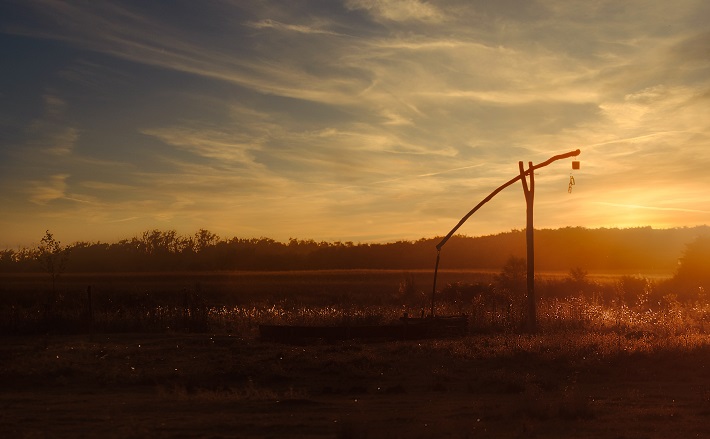Dear Working Preacher,
Thank you for all that you do to preach the gospel. Thank you for speaking out loud the word of hope. Thank you for announcing that in Jesus Christ, God is overcoming all of the forces that seek to defy the life-giving will of the Creator.
The well: A place of encounter
The story of Jesus and the Samaritan woman at the well is one of my favorite stories in all of Scripture. I love the story for many reasons—from the big themes to the minute details. I love the big theme that Jesus loves and offers fidelity to the woman who has experienced nothing but infidelity and non-love from a series of men—five husbands and then a sixth non-husband. I love the tiny detail that she brings a pail with her to the well to get water. But when she receives “living water” from Jesus, she abandons her pail and races back to town to tell her friends that Jesus is the Messiah. And there are so many more aspects of the story to love.
This year, as I reflect on this beautiful story, my imagination is captured by the place where Jesus encounters the Samaritan woman—Jacob’s well (or at least a well “near the plot of ground that Jacob had given his son Joseph”).
An aside about “the well” as a type scene. A great deal has been written about the well in the Bible as a betrothal type scene. In the Old Testament, three times a woman meets a man at a well. Moses meets Zipporah; Jacob meets Rachel; Rebekah meets Abraham’s servant (who is seeking a wife for Isaac). In each case, the woman ends up marrying either the man she meets or a man from his family. Zipporah marries Moses; Rachel marries Jacob; Rebekah marries Isaac. Not everyone agrees with this framework, but I find it convincing.
If the well is understood as a betrothal type scene, what happens in John 4 turns the traditional well scene on its head. The audience knows Jesus never married—so they know Jesus meeting a Samaritan woman at a well is not a betrothal scene. But it is an encounter scene—it is a salvation scene. The well is a place for critical, life-changing encounter with God.
The well: An in-between place
The well is also an in-between place. A place in between where Samarians and Jews live and move and have their being.
The way the so-called “Samaritan woman” is named is important. The NRSV introduces her like this: “A Samaritan woman came to draw water.” Similarly the NIV has “When a Samaritan woman came to draw water.”
But what the Greek more literally says is “A woman from Samaria …”
To me, the NRSV and NIV seem to emphasize the woman as a Samaritan. The Greek seems to emphasize Samaria as where she is from … but she meets Jesus at the well—an in-between place.
The well is a space in between Jews and Samaritans.
The well is a space in between town and wilderness.
The well is a place in between the men who have been unfaithful to her and Jesus—the one being of ultimate fidelity.
The well is a place in between her painful past and her joyful future.
Cultivating in-between places
Reflecting on the well as an in-between space reminded me of two basic lessons about ministry that I learned from others—one long ago and one more recently.
The long ago lesson. A pastor who was my mentor told me when I started ministry, “A pastor should be locked in the study in the morning and locked out of it in the afternoon.” Meaning—ministry is both a life of study and a life of relationships. And in order to build relationships with those people who are not already stopping by the church building to see you, you need to get out of the building every single day. In other words, meet people at those in-between spaces: high school sporting events, lunches, local community gatherings, and so on.
The recent lesson. Two pastors I know are bi-vocational—at least part-time in paid ministry, but making money in a second job, too. And they both tell me the same thing: “I have more and better faith conversations with people at my non-church job … and it’s not even close.” One added, “At church people want to talk about the business of running the congregation—how to pave the parking lot. But at the ——-, people ask me about God.”
The life of the working preacher is a life of both study and preparation to preach the word. But it is also a life of getting out of the building and the running of the congregation. It is a life of cultivating the in-between spaces, of meeting people in those spaces, and then preaching the word to those we meet out there—in the in-between spaces.
Thanks for all you do, Working Preacher. God is changing the world through you and your work and your words. God is bringing about a better future for the beloved creation through you and all like you.
Rolf Jacobson

